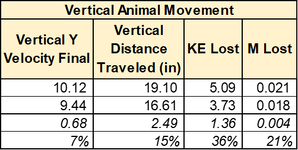@Mighty Mouse @Billy Goat
I guess the better question, looking at momentum now, is which arrow setup would you lean toward assuming both are equally accurate? Also would the RIP benefit from a 125gr head up from bumping the arrow weight up to 447? I will need to chrono this configuration though to get a speed.
Any of the arrow weights you've mentioned in this thread will work fine. You won't see a major difference between them in practice from the lightest (422 gr) to the heaviest (476 gr).
Arrow speed vs. weight is a trade-off between the flatter trajectory and tighter pin gaps of a lighter/faster arrow vs. greater penetration potential of a heavier/slower arrow. Where along the spectrum you choose to land is largely personal preference based on a combination of factors such as max shot distance, hunting style, and the animal you're hunting. There's no "correct" arrow weight, just a wide range of options bounded on the low end by avoiding damage to the bow (minimum 5 gpp). "Too heavy" is wherever you decide your max range has become too short and/or pin gaps have become too large.
That said, 7 gpp (grains of arrow weight per pound of draw weight) generally provides a good balance of weight and speed for a hunting arrow IMO. 7 gpp at 65# would be 455 gr.
Now that you have KE data for your buddy's bow, you can estimate speed at any arrow weight with a high degree of accuracy. Assume KE remains constant and use KE to calculate speed:
Arrow Speed in fps = SQRT(450,380 × KE in ft-lbs ÷ Arrow Weight in gr)
Example using the average of your two KE data points (69.6 ft-lbs) to calculate speed at 447 gr:
SQRT(450,380 × 69.6 ft-lbs ÷ 447 gr) = 265 fps
If your buddy is planning to use these arrows for western archery this year, y'all need to get off the fence soon so you have time to practice with the arrows and ensure the bow is tuned to shoot them well. Time spent shooting and tuning is much more beneficial than laboring over arrow builds.






